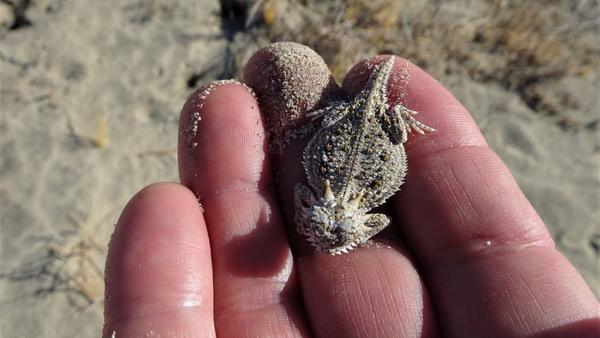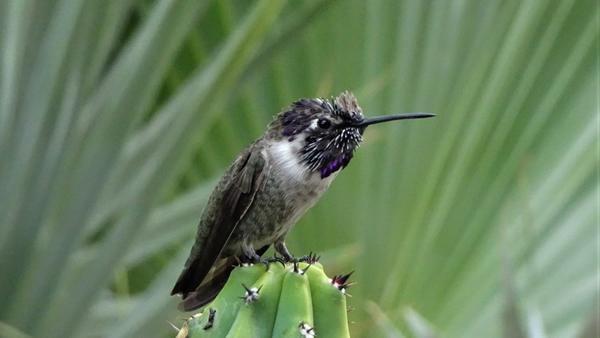On biophilia and what it means for you
The exuberance you feel in nature? There's a word for that“Biophilia, if it exists, and I believe it exists, is the innately emotional affiliation of human beings with other living organisms.” — E.O. Wilson
Edward (E.O.) Wilson is a naturalist. He is also an eminent scientist. His accomplishments include developing the theory of Island Biogeography with Robert McArthur. The theory is as elegant as it is seemingly simple: all other things being equal, small islands farther from mainland (source) populations have less biodiversity and higher extinction rates. Larger islands, islands closer to a mainland, and islands with other islands in close proximity have greater biodiversity and less extinctions.
This theory is the backbone of conservation biology and conservation practice. When setting up preserves to protect a species and the natural community within which it lives, bigger, interconnected “islands” of protected lands will be more successful at protecting biodiversity than small, isolated parcels. McArthur was a mathematical genius who saw the natural world in terms of equations describing the ebb and flow of populations, competitive relationships, and evolutionary success or failure. Unfortunately, he died far too young from cancer. In his epitaph, while others extoled his mathematical prowess, his academic advisor, G. Evelyn Hutchinson, wrote that Robert “knew his warblers," (he was also a naturalist).
Wilson, who is also one of the world’s experts on ants, has gone onto develop additional theories including Sociobiology (why social organisms such as ants, bees, and termites are so successful). One of Wilson’s regular co-authors, Bert Hölldobler recently (2019) published a paper about one of our local desert ants, the black harvester ant, Veromessor pergandei, (the harvester ant that doesn’t sting – whereas the red and black ones, Pogonomymex californicus have a sting that will still hurt days later). Black harvester ants form immense colonies that forage for seeds to feed their growing larvae. The ants must collect sufficient food to replace up to 650 ants, every day. That alone is amazing, but Bert and his co-author described a behavior employed by black harvesters that is even more remarkable. There is a spider that will set its web to ensnare foraging ants, but once ensnared, the captured ants provide a chemical signal so their sisters will avoid the trap. But then, and this is the truly amazing part, just a few of their sisters will divert from what seems like a single minded food gathering effort, and will at their own possible peril free their sisters from the web and dismantle the web so no others can become entangled. Sociobiology.
One of Wilson’s other theories is called Biophilia. In essence it is what he described as an innate joy, if not exuberance, that people experience in nature, communing with other living things. Perhaps it is a connection with our not all that distant past when our existence depended on an acute understanding of the world around us, its opportunities, and its perils. Although certainly not everyone you have met is a nature lover, but the question is whether they lack that empathy and affiliation with other creatures, or have they lost it due to an existence in canyons of concrete, with fields of asphalt and manicured lawns. I know I have it.
What is curious to me is that my level of joy in nature varies with what kind of habitat I am trekking through. I have visited Ecuadorian tropical forests in the Amazon basin where the biodiversity is perhaps the highest on earth and mostly felt frustration. There was a din of insects and birds that was almost deafening, but they were all above me in the forest canopy out of sight. Our Quechuan guide, an indigenous people related to the Inca culture that were nearly decimated by Pizzaro and his conquistadores, knew every plant, every bird, every insect. He would stop and hear or catch a glimpse of some gaudy bird, but more times than not as I crept up behind him to catch a look at what he had seen, he would mutter “se fue” (it’s gone). Then, on our last day, our guide took us to a canopy platform 200 feet above the forest floor and at canopy level. Once I got over my vertigo, my joy returned. We were now looking eye to eye with toucans, parrots, howler monkeys, and lizards. Our barefoot guide casually walked on the meter thick, epiphyte covered branches, out beyond the security of the viewing platform, and would bring back a tarantula or lizard. I was in heaven.
But it is the desert that I genuinely love. Perhaps because in a desert I am always at or above “canopy level” and can more easily see so many of the creatures that live here. Perhaps it is because in a desert I can see the landscape as an artist/photographer sees their subject; there are distinct focal points (a grouping of rocks or cacti or ocotillo) nestled within broader landscape. In a tropical forest, or a forest of any kind, there are a myriad of trunks, but rarely a single focal point. Then it is my unquenchable amazement of the strategies desert creatures employ to not only survive but thrive in these arid landscapes. I’m not alone. One of our community scientists Larry Heronema (Cal Nat class of 2018) and I will at some point on almost every lizard survey stop in shared awe of the beauty of our desert.
Ed Wilson is still at it. He has always been deeply concerned about the on-going loss of biodiversity our species has fomented. His objective is to save half the earth in some measure of a natural state, and in doing so biodiversity will be maintained. His current campaign is 30% by 2030. The Governor of California has already committed to reaching that goal.
“Never Doubt that a small group of thoughtful, committed citizens can change the world; indeed, it’s the only thing that ever does.” — Margaret Mead
Go outside, tip your hat to a lizard, and be safe.

